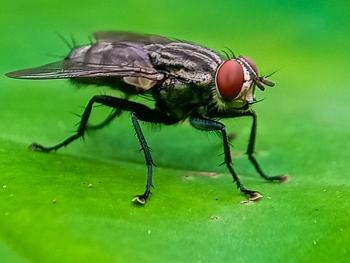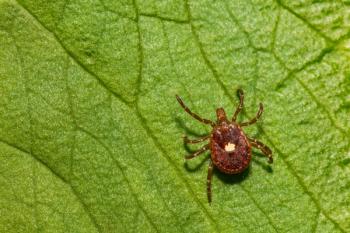
Hemolytic anemia in cats: Infectious or immune-mediated? (Proceedings)
Classic signs of anemia include lethargy, weakness, inappetence, pale mucous membranes or icteric membranes if hemolysis is occurring.
Objectives
- Review typically historical and physical exam findings in cats with hemolytic anemia
- Outline the ideal infectious disease workup
- Focus on diagnosis and therapy for the most common causes of IMHA in cats, such as Mycoplasmahaemofelis
- Provide an assessment of recent literature evaluating idiopathic IMHA as a disease entity in cats
Key Points
- Common etiologies of anemia (both regenerative and non-regenerative) in cats include infectious diseases, renal disease, toxins and neoplasia.
- Hemolytic anemia is usually secondary to a primary infectious cause
- A complete infectious disease panel for IMHA in cats includes: Mycoplasma haemofelis, M. haemominutum, Cytauxzoon felis, Bartonella spp, Anaplasma phagocytophilum and Ehrlichia spp.
- Treatments for the haemoplasmas have expanded to include the fluoroquinolones
- Primary immune-mediated hemolytic anemia may be more common in cats than previously thought
Clinical Presentation
Classic signs of anemia include lethargy, weakness, inappetence, pale mucous membranes or icteric membranes if hemolysis is occurring. Given that infectious disease and neoplasia are two major rule-outs for hemolytic anemia, fever is often present. Exposure to drugs or toxins such as onions, methimazole and acetaminophen is important to ascertain. Other causes of anemia (without hemolysis) include chronic renal disease, FeLV/FIV, primary bone marrow disorders and anemia of chronic disease. This latter group of diseases should be considered when the anemia is non-regenerative.
Diagnostic Evaluation
A complete blood count, including reticulocyte count, will determine whether the anemia is regenerative or non-regenerative. Acute blood loss will not be regenerative for 2-4 days; clinical evidence of bleeding and a low plasma protein should differentiate acute blood loss from hemolytic anemia. Spherocytes are difficult to identify in feline blood smears and are therefore not a reliable means to diagnose hemolytic anemia. Presence of reticulocytes and/or nucleated red blood cells and macrocytosis with or without autoagglutination is diagnostic for regenerative anemia. A Coombs' test may be performed, but a negative test does not rule out hemolytic anemia. A biochemistry panel is necessary to rule in or out other causes of anemia and may demonstrate hyperbilirubinemia if hemolysis is severe. Depending on the infectious organism or neoplastic process, other abnormalities may be apparent. FeLV/FIV testing should be done and thoracic and abdominal radiographs (or abdominal ultrasound) to evaluate for neoplasia.
Specific Infectious Diseases
Several infectious diseases have been documented to cause hemolytic anemia in cats, though some are more common than others.
Hemoplasmosis
The most common of these are the hemoplasmas, recently reclassified from a Rickettsia (Haemobartonella) to the Mycoplasma genus: Mycoplasma haemofelis (large form) and Mycoplasma haemominutum (small form). Identification of the epi-erythrocytic organism on a blood smear is unreliable because of cyclic parasitemia, staining artifacts and sample handling. PCR for organismal DNA is the most sensitive and specific test for the hemoplasmas. Treatment includes doxycycline or the fluoroquinolones in certain circumstances.
Cytauxzoonosis
Although generally a rapidly fatal disease in cats, recent case studies have demonstrated some success with therapy. "Signet ring"-shaped organisms are located within the red blood cell during the erythrocytic phase of the infection, but these may not be present in the early phases of the disease. PCR assays are also available at university research labs. Treatment in cats that have survived has included an anti-protozoal agent (parvaquone and buparvaquone) combined with imidocarb and aggressive supportive care. A promising combination of an anti-malarial drug (atovaquone) and azithromycin is currently being evaluated by several researchers.
Bartonellosis
Generally associated with subclinical disease in cats, hemolytic anemia is a consequence of several human Bartonella spp. infections, including a case of human hemolytic anemia caused by Bartonella henselae. Studies have also demonstrated the intraerythrocytic location of B. henselae in naturally-infected cats. However, an epidemiologic study attempting to correlate various organisms, through the use of PCR assays, with cases of hemolytic anemia found no significant prevalence differences in the healthy cats versus anemic cats with a positive Bartonella PCR assay.
Ehrlichiosis
Ehrlichia spp. has been demonstrated to cause clinical signs in cats, including fever, lethargy, inappetence and anemia. The anemia is often classified as non-regenerative. However, because Ehrlichia PCR is not normally part of the battery of infectious disease tests ordered for the cat with hemolytic anemia, it is still not known how much of a role this disease plays.
FeLV/FIV
A non-regenerative anemia is usually the clinicopathologic abnormality in young cats diagnosed with FeLV, but hemolytic anemias have been documented. FeLV antigen testing is therefore recommended for any cat presenting with hemolytic anemia. FIV infectious are nearly always associated with a non-regenerative anemia and likely falls into the category of "anemia of chronic disease" rather than a primary immune-mediated mechanism.
Primary Immune-mediated Disease
There is a subset of cats for which neoplasia, toxins and the majority of infectious diseases have been ruled out, either by infectious disease assays or trial therapies with anti-bacterial agents. These cats only respond to immunosuppressive doses of glucocorticoids and have relapses when dosages are reduced or discontinued. Primary IMHA has been thought to be uncommon in cats, but recent epidemiologic studies and case series suggest. IN one retrospective study, approximately 60% of cats with anemia had no identifiable infectious or neoplastic cause for their anemia. New techniques, such as flow cytometry and anti-erythrocyte antibody assays, may be helpful in identifying cats with an underlying primary hemolytic anemia.
Summary
The most common cause of hemolytic anemia in cats has long thought to be secondary to infectious diseases, neoplasia, and toxins. While these infectious and non-infectious diseases should be considered in cats presenting with hemolytic anemia, primary hemolytic anemia may be more common in these cats than historically thought.
Selected references
VanSteenhouse JL, Toboada J, Millard JR. Feline hemobartonellosis. Compen Contin Educ Pract Vet 1992 (15), 535-545.
Tasker S, Lappin MR. Haemobartonella felis: recent developments in diagnosis and treatment. J Fel Med & Surg 2002 (4), 3-11.
Bondy PJ Jr, Cohn LA, Tyler JW, Marsh AE. Polymerase chain reaction detection of Cytauxzoon felis from field-collected ticks and sequence analysis of the small subunit and internal transcribed spacer 1 region of the ribosomal RNA gene. J Parasit 2005 (91), 458-61.
Walker DB, Cowell RL. Survival of a domestic cat with naturally acquired cytauxzoonosis. JAVMA 1995 (206), 1363-5.
Stubbs CJ, Holland CJ, Reif JS, et al. Feline ehrlichiosis; literature review and serologic survey. Compend Cont Educ Pract Vet 2000 (22), 307–317.
Neer TM, Breitschwerdt EB, Greene RT, Lappin MR. Consensus Statement on Ehrlichial Disease of Small Animals from the Infectious Disease Study Group of the ACVIM. J Vet Int Med 2002 (16), 309-315.
Kohn B, Weingart C, Eckmann V, et al. Primary Immune-mediated anemia in 19 cats: diagnosis, therapy and outcome (1998-2004). J Vet Int Med 2005 (20), 159-166.
Ishak AM, Radecki S, Lappin MR. Prevalence of Mycoplasma haemofelis, 'Candidatus Mycoplasma haemominutum', Bartonella species, Ehrlichia species, and Anaplasma phagocytophilum DNA in the blood of cats with anemia. J Fel Med & Surg 2007 (9),1-7.
Newsletter
From exam room tips to practice management insights, get trusted veterinary news delivered straight to your inbox—subscribe to dvm360.




